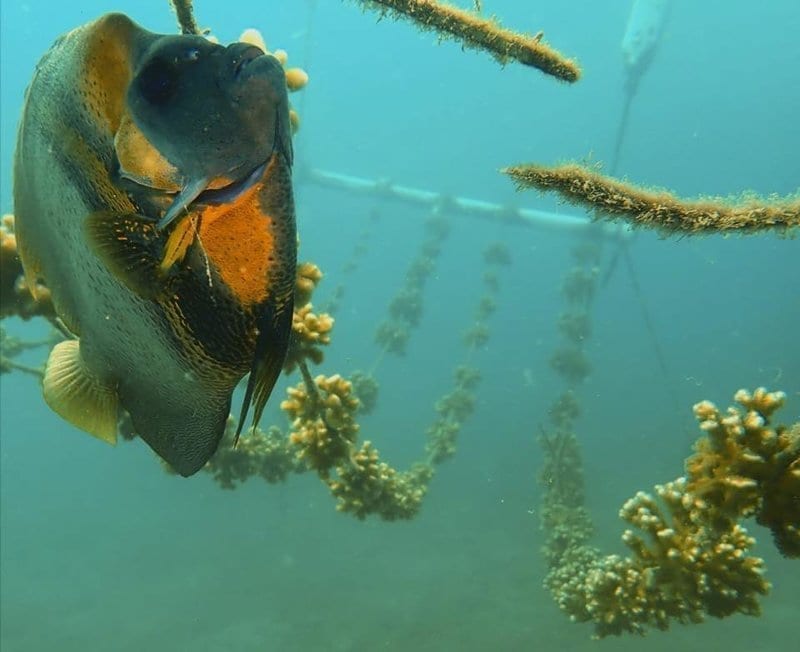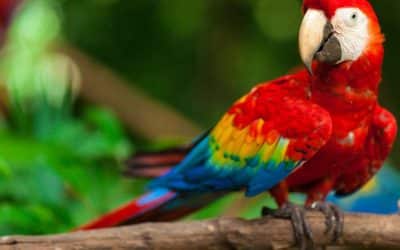The Ocean’s Rainforest
To paraphrase an old adage, “As go the coral reefs, so goes the planet.” Although they represent only about one ten-thousandth of the ocean floor (0.01%), coral reefs are essential for the existence of about one-quarter of sea life. Algae and other unique plant life grow there, providing food for a variety of species. Used as protection for vulnerable marine life, as well as hunting grounds for their oceanic predators, coral reefs thus become a spawning site for all participants in this Darwinian interaction. The number of microbial species dwelling in, and dependent on, these reefs reaches into the tens of thousands, and are still being discovered and studied.
Coral are sea animals with exoskeletal systems. They belong to the Anthosoa family, along with sea anemones and jellyfish, which ironically, have no skeletal system. Each coral animal, called a polyp, creates a calcium carbonate shell, which it continually reproduces, therefore cloning itself.
Valid analogy
Indeed, coral reefs have become a litmus test for life on the planet. The “the ocean’s rainforest” analogy is quite valid. In Costa Rica, these reefs thrive in the southernmost areas of both the Pacific Ocean and Caribbean Sea. On the western shores, there are diverse and bountiful reefs around Playa Sámara, Dominical, Isla del Coco and Corcovado National Park. On the Caribbean side, coral reefs are most plentiful around the 600-acre Cahuita National Park, where elkhorn, yellow stag and blue staghorn coral reside. Barracuda, stingray, angelfish and blue parrotfish also inhabit this area.
A delicate environmental balance allows these hotbeds of life to survive and propagate. Coral reefs thrive in shallow breeding grounds. The temperature, to a tenth of a degree, is critical; hence their preference for more southern climes nearer the equator. Coral is highly susceptible to the acidity level of the ocean as well. For example, recent studies of these fragile ecosystems reveal the havoc wreaked on them by sunscreen products.
Costa Rica’s coral reefs are relative infants, having begun their formation a “mere” 5,000 years ago. Earth’s oceans have contained these reef’s forefathers for an estimated 500 million years.
Raising Coral Costa Rica understands the symbiosis between humans and the ocean.
Raising Coral Costa Rica
For the past three decades, Costa Rica’s coral reefs have been ravaged by El Niño, climate change and human invasion. In 2019, an organization called Raising Coral Costa Rica partnered with Centro de Investigación en Ciencias del Mar y Limnología (CIMAR ) to undertake vitally important work. Operating as a University of Costa Rica team, group members are striving to help replenish (or “reforest”) the country’s coral reefs. They extract fragments from a donor colony — typically one or two centimeters in length — then take them into a laboratory to be propagated.
A successful new colony takes six to 10 months to colonize to the point where it can be safely returned to the sea. This delicate process is already beginning to show signs of success, with new life re-appearing in places where El Niño decimated coral reefs in 2006.
Raising Coral Costa Rica understands the symbiosis between humans and the ocean. As the coral reefs disappear, so does other life on the planet.
For more information, visit Raising Coral Costa Rica or the Facebook page @ Raising Coral Costa Rica.
Photo Credits : Photos courtesy of Raising Coral Costa Rica
Video Link : https://youtu.be/uGtlYS99T_0?t=8






